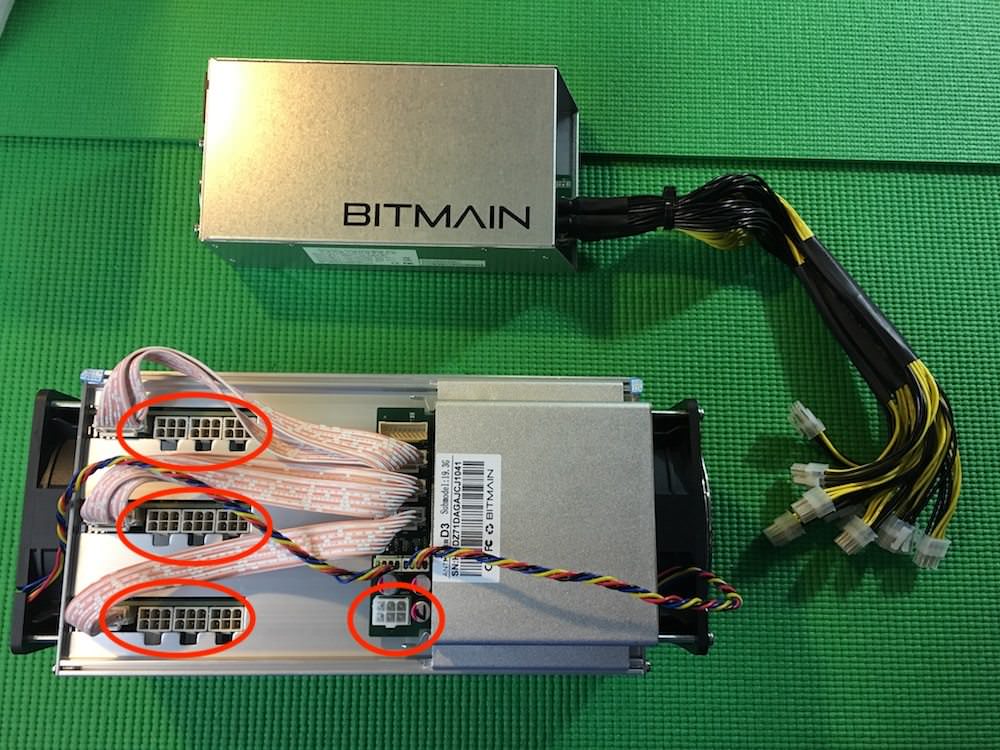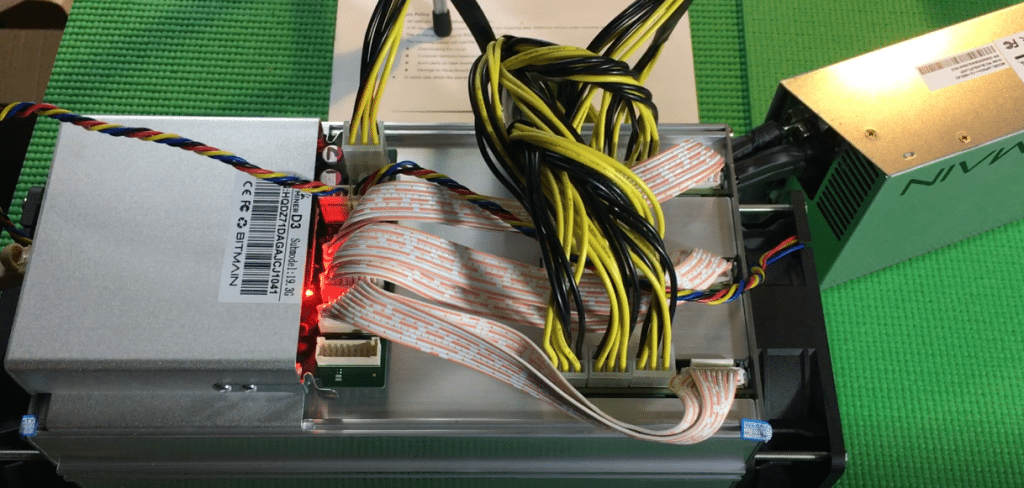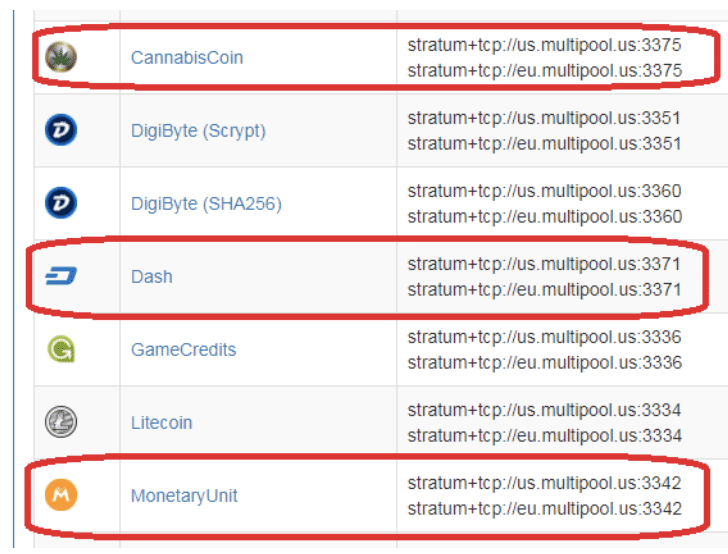
Last updated on December 25th, 2017 at 01:49 pm
Dash is an altcoin that focuses on privacy and instant sending (allowing confirmations to be done within a second). We’ve covered Dash and how to buy it in the past, today I would like to give you a detailed guide about how to mine it. Unlike Bitcoin, which uses the SHA-256 algorithm for Bitcoin mining, Dash uses a different algorithm called X11.
If you’re more of a visual person you can watch this video to get started with your Antminer D3 miner (the hardware you’ll need to mine Dash):
First, a Word about ASIC Miners:
Ethereum, Zcash, and Monero mine GPU on coins. But some coins, such as Bitcoin and Dash, are mined with ASIC (Application Specific Integrated Circuits) Miners. These powerful machines are hundreds of times more powerful than GPU rigs. And they’re designed to simply do one thing: mine the algorithm they’re programmed for.
Now, some people might ask why you wouldn’t just buy the coins directly, as opposed to buying and running an expensive miner. Here’s the answer: these machines can be quite profitable over the long term, so they’ll continue to bring in mined coins for many months.
That said, they typically do have a finite life cycle, which is shorter than GPU rigs. These shorter cycles are due to the impact that ASIC miners have on coins or algorithms after they’re released. They cause the mining network to have difficulty skyrocketing. In other words, everyone gets fewer rewards, in terms of coins. But since GPUs are always around, the changes in difficulty aren’t as dramatic as the ones that dedicated miners have.
This drop in profitability can still be offset if coins gain value, which is exactly what Dash has. So the coins can make you earn more over time. However, this impact should be noted: In a bear market, coin values fall. Therefore, many folks can’t even afford to run the miner, which compounds the point further.
Increased difficulty = fewer coins mined = less value
When these Antminer D3’s were purchased in summer 2017, they were showing earning calculations of $150-170 PER DAY. I conservatively figured that they would drop by two-thirds (down to around $50 per day), which still would have been quite profitable. But I grossly underestimated the impact that these ASICs would have on Dash and other X11 coins.
By the time I received my ASIC, profitability was down to around $5 per day. It’s lately come back up a bit, to around $6-8 per day. But that’s a pretty drastic decline from the allure of the purchase.
Let’s walk through setting the miner up. Then I’ll close with some thoughts on how to optimize the usage and maximize your profits.
Setting Up Your Bitmain Antminer D3 ASIC Miner
Unbox your D3, power supply, and cables.
Hook everything up:
- All 10 PCI-e connections (3 on each hashing board, and one on the controller)
- The Ethernet cable from the D3 to your router
- The power cord
It should power on automatically.

Download the free Advanced IP Scanner tool. Install and run the tool:
- Start scanning with the Advanced IP Scanner. (Hit “scan.”)
- Look for “Antminer,” and note the IP Address. (For example: IP – 192.68.0.8)
- If AntMiner is found as shown above, go to Step 4. If it does not show up, stop the scan, and turn off Windows Firewall. Then start the Advanced IP Scanner Scan again.
- Once the Antminer IP is found, go to that IP in your Browser. (Example: IP – 192.68.0.8) Use Chrome or any other browser.
- Use the word “root” for both the username and password.
- If you had to turn off Windows Firewall in Step 3, turn it back on.
Here’s how the whole process should look:

Mining Bitcoins on Nicehash with Your Antminer D3
Note: At the time of this writing, Nicehash is down, due to a hack. So this exact method is not recommended. But I will update it once this situation is resolved.
You can indirectly mine Bitcoins with your D3. Here’s the way it works: You are still mining the X11 algorithm, which Nicehash sells to the highest bidder. Then it pays you out in BTC.
Before they went down, I was actually mining them with several of my GPU rigs. When BTC is going straight up, it makes more sense than trying to directly mine altcoins. In terms of BTC value, the pace at which the USD value increases exceeds Altcoins (in terms of BTC value).
Use the following servers on the “Mining Configuration” page of your Antminer:
Pool URL: stratum+tcp://x11.usa.nicehash.com:3336#xnsub
WORKER: walletaddress.workername
PASSWORD: x
(A quick shout-out to GaryCutri for his Nicehash Setup guide on Steemit.)
Note: you can use any bitcoin address you control and any workername, just put a period in between. You can use servers in USA, EU, and Japan. In the stratum address below, just use the optimal one, based on your location.
Here’s an example:
Pool URL: stratum+tcp://x11.eu.nicehash.com:3336#xnsub
WORKER: 37UPzLMoFE7i41qChPPXh7RxPprXWyMZBy.MyCoolAntminerD3
PASSWORD: x
So on your Antminer “Miner Configuration” page, it looks like this:

Hit “Save & Apply” in the bottom right-hand corner, and you’re off and mining BTC!
Mining for X11 Altcoins (Dash, MUE, etc.)
I recommend using Multipool.
Register, login, and go to Account > Your Balances. Enter the wallet addresses for the Altcoins you mine (Recommend Dash, MUE, and CANN).

Go to Account > Workers. Click “Add Worker,” and give your worker a name.


Click on “Home,” and scroll down to find the server URL of the coin you want to mine. Copy the server URL:

Go back to your Antminer Miner Configuration page, and paste the stratum URL. Then copy and paste your worker name. The password should be “x.”

Again, hit “Save & Apply” in the bottom right-hand corner, and you’re off and mining your X11 Altcoins!
That’s it. You’re all set! If you run into issues, watch the video above. You can pause it along the way, and review various steps as needed. I’ve broken it down into many steps above, but the entire process really only takes about 10 minutes. Then you’ll be completely set up and mining.
Profit Considerations
I recommend mining the smaller coins (MUE & CANN). They have the most likelihood of increasing exponentially—even 3 to 5 times more. Dash or BTC might also go up, of course. They have been up lately, but they are up so high right now that it’s not likely to double or triple anytime soon. They have such large market caps that it takes that much more money to impact the overall value for move of up to 10x more.
For example, CANN has a market cap of less than $5 million (compared to Dash, which at almost $6 billion!). So a single whale pumping the market could easily create a 3-5x spike. In other words, the CANN coins you were mining at a calculation of roughly $6 a day in profits are now worth the equivalent of $18 a day (on a 3x move) or $30 a day (on a 5x move). In other word, your ROI time may have just decreased to 2-4 months, which is very good.
That’s it for the beginner’s guide to mining with your D3 ASIC Miner from Bitmain! If you run into any issues or have questions, please comment below or in the video comments, and I will try to help.
If you are interested in taking your crypto mining to the next level from here, sign up at Crypto Mining Academy. There, I will go into massive depth, and detail every step of mining in a comprehensive course.
Happy Mining!
Ian
I’m a Crypto Miner, Trader and Investor. As a long-time gamer, I’ve built and optimized custom gaming pc’s for many years and then stumbled upon Cryptocurrency Mining in 2014 and took the red pill.I’ve spent hundreds of hours researching, building and optimizing mining rigs via trial and error and various tutorials (so you don’t have to!).For more advanced materials check out my site cryptominingacademy.com.
Latest posts by Ian (see all)
